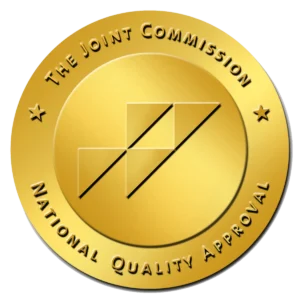Every March 1 is Self-Injury Awareness Day, a day that is designated to increase understanding of the practice of self-harm. Self-harm or self-injury is when a person intentionally hurts their own body.
At The Pavilion, we frequently help people who have engaged in self-injury behaviors to develop other coping skills to increase their safety and well-being. Self-harm is not always accompanied by suicidal thoughts, but people who engage in self-harm are at increased risk for attempting and completing suicide if they do not get help.
Causes of Self-Harm
Self-harm tends to begin in adolescence or early adulthood and can happen for a variety of reasons, but generally occurs when someone has difficulty managing their emotions and a lack of better coping skills. People may self-harm to:
- Find relief from emotional distress
- Distract themselves from emotional pain by focusing on physical pain
- Feel a sense of control over their body, life, or feelings
- Try to feel something when they otherwise feel nothing
- Punish themselves for something they feel they did wrong
A common misconception about self-harm is that people do it for attention, but this is not typically the case.
A Difficult Cycle to Break
Some people engage in self-harm only a couple of times and then stop. For other people, it is an ongoing behavior that they have difficulty letting go. They crave the brief sense of calm and release they feel after engaging in self-injury behaviors and then the emotions they were trying to avoid return, along with guilt and shame. This can lead to a painful and difficult-to-break cycle of self-harm and emotional distress.
Types of Self-Harm
There are a variety of different behaviors that can be considered self-injury if the person is doing them deliberately, for the purpose of hurting themselves. These often include:
- Cutting or scratching
- Burning
- Hitting
- Pulling hair
- Biting
- Pinching or picking at skin
In more serious cases, people have been known to cause themselves extreme injuries, like broken bones.
Risk Factors for Self-Harm
People who engage in self-injury behaviors often share these traits:
- Age of onset is usually around 13-14 years old
- Often have friends who engage in self-harm
- Frequent struggling with past or current life issues like abuse, trauma, unstable family, or struggles with their sexual identity or feeling isolated
- Usually struggling with one or more mental health conditions, which may include:
- Borderline personality disorder (sometimes called emotional intensity disorder)
- Depression
- Anxiety
- Post-traumatic stress disorder (PTSD)
- Eating disorders
- Sometimes accompanied by alcohol or drug use
Signs of Self-Harm
If you are concerned that someone could be engaging in self-injury, look for the following:
- Scars, often concentrated in one area, such as the arms, legs, or stomach
- Frequent, fresh cuts, scratches, bruises, bite marks, or other injuries
- Tendency to keep items used for self-harm close at hand (lighters, cigarettes, knives, razors, etc.)
- Wearing clothing to cover arms and legs, even in hot weather
- Rapid changes in mood and behaviors, generally accompanied by impulsivity
- The person indicating they feel helpless, hopeless, or worthless
Consequences of Self-Harm
There are a number of negative outcomes that can result from engaging in self-injurious behaviors:
- Increased feelings of guilt, shame and poor self-esteem
- Permanent scarring and resulting self-consciousness
- Infections
- Severe injuries leading to death
- While self-harm often does not involve intent for the person to end their own life, the same painful feelings that led to self-harm can also fuel suicidal thoughts and attempts if the person does not receive treatment
How You Can Help
If you are concerned that a loved one is engaging in self-harm, it is important to initiate a discussion with them:
Ask how they are doing. Even if their answer makes you uncomfortable, listen to what they tell you.
- Even if you don’t understand why they are doing what they are doing, tell them that you want to help.
- Don’t shame them for engaging in self-harm behaviors.
- Validate their feelings.
- Encourage them to get treatment and help them find treatment if they don’t know how to get started or are too overwhelmed.
- Don’t ask for promises to stop, as this will only add to their guilt if they cannot stop.
At The Pavilion in Williamsburg, Virginia, we offer a variety of treatments, including dialectical behavioral therapy, a type of therapy that can help support people who need to change a pattern of behavior. Medication may also be helpful if the person is trying to manage difficult feelings that are part of a mental health condition.






